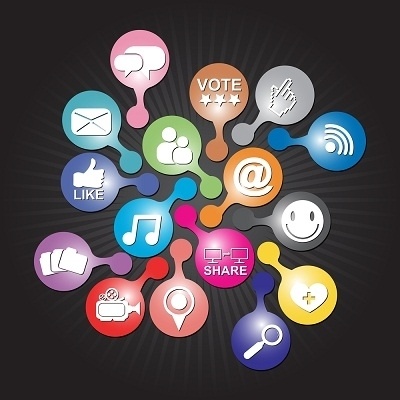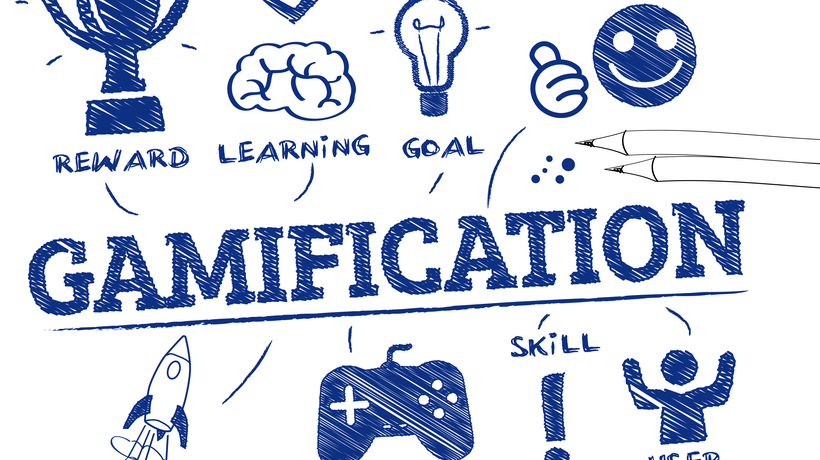It is exciting to be part of the learning revolution happening all around us, with new learning paradigms and technologies emerging almost on a daily basis. Thanks to the inherent quality of learning designers, we find it easy to adapt with most of these changes. However, some of the shifts may require us to move beyond the traditional definitions of ‘learning’. A few may also necessitate ‘unlearning’ and ‘relearning’ the conventional beliefs that we have been carrying with us all these years.Gamified learning is one such major revolution that demands a shift in the mere thinking of ‘learning’. It requires us to unlearn and relearn the traditional notions of:
- Learning style/preference (Fun, Social Interaction, Competition)
- New (additional) dimensions to learning (Challenge, Engagement, Motivation)
- New (additional) elements to learning (Rules, Challenges, Levels, Scores, Badges, Leaderboards)
Gartner predicts that this year, 80% of the current gamified applications by companies will fail to meet business objectives. The primary reason cited for this (failure) is ‘poor gamification design’. This calls for the need to focus on the skillsets required for designing good gamified learning experiences. In this article, we’ll take a quick look at the top 10 essential competencies that a learning designer is required to possess for designing effective gamified learning interventions.
Gamified Learning Design Competencies
Gamification is universally getting accepted as a valid learning strategy today. Many organizations have already started incorporating gamification into their training approach. However, designing gamified learning demands a diverse and distinctive set of qualities from designing normal e-learning. Designers who have been masters at designing e-learning interventions for years are facing a major challenge with transitioning to gamification. So, what are the new competencies required to help detach from the traditional mindset and relearn new strategies for designing gamified learningHere are the Top 10 Competencies that we think are the most importantKnowledge
- Knowledge of the instructional approaches, tools, systems, and processes required for designing and developing effective gamified learning interventions
- Knowledge of the best practices related to the development of gamified learning interventions
- Knowledge of successful gamified learning implementations around the world
- Knowledge of today’s trends, research initiatives and experiments happening in the field of gamified learning
- Knowledge of the strategies for adopting gamification in learning
- Knowledge of the future direction (forecasts) of gamified learning
Skills
- Ability to analyze a business situation and the learning context, and recommend appropriate gamified learning solutions to address them
- Skills to design and develop effective gamified learning programs to meet business objectives
Attitude
- Passion for learning and improvement in the areas of instructional design and gamified learning, and all related fields
- Appreciation of the power and effectiveness of gamified learning
The Top 14 Gamified Learning Design Resources
There are numerous resources on gamified learning design for learning practitioners on the web. Here are the links to a few interesting curated resources that will guide you towards mastering the competencies discussed above:
- Gamification of LearningThis is a brilliant presentation on Gamification from Karl Kapp that discusses the techniques for creating gamified learning experiences using some of the instructional design methods that encourage immersive learning.
- Introduction to Gamification vs. Game-Based Learning (GBL)This presentation by Sherry Jones is a very good resource that differentiates between Gamification and Game-Based Learning (GBL) with many interesting examples and use cases. It also briefly touches upon the benefits and drawbacks of both these methodologies.
- 10 Things We Know about How to Design Games for Learning from ResearchThis brilliant presentation from Karl Kapp contains valuable thoughts on designing games for learning. He draws these thoughts from his book ‘The Gamification of Learning and Instruction’ and the most recently published ‘Fieldbook’, using statistical data and real-life examples to support and illustrate his points.
- Introduction to Gamification - WhitepaperThis excellent whitepaper authored by Piet van den Boer discusses the Gamification Design Framework created by Professor Kevin Werbach of Pennsylvania University to successfully implement a gamified system in workplaces. The six steps in the framework are beautifully articulated using the example of Amazon’s Top Customer Reviewer program.
- The Gamification of Learning - What Research Says About Simulations & Serious Games This presentation by Karl Kapp contains important research findings and interesting facts about gamification. It also includes the benefits of the gamified learning methodology with examples.
- Games, Simulations and Gamification in Learning Design and DeliveryIn this presentation, Karl Kapp discusses the roles that games, simulations and gamification play in learning design and delivery. The focus here is on simulated learning experiences.
- Gamification is Here: Build a Winning PlanThis presentation from by Marta Rauch of Oracle includes well articulated thoughts on gamification techniques, and covers enterprise gamification with real-world examples (though with a focus on Oracle). It also includes some of the serious topics such as accessibility and localization related to gamification that are hard to find in other articles.
- Gamification - Defining, Designing and Using itThis presentation by Zac Fitz-Walter (of Mobile Innovation Lab, Queensland University of Technology) illustrates the concept of gamification, it's roots, design and application, in a few words, but using lots of pictures. The sections on the steps to design gamification and the dangers of Gamification are worth exploring.
- Meaningful Play – Getting Gamification Right In this video, Sebastian Deterding, User Experience Designer and Game Researcher at the University of Hamburg, provides an overview of the current gamification movement, its most troubling blind spots, the motivational powers of games, and how to design for a playful experience that is truly meaningful to users.
- Gamification DesignThis is a free Massive Open Online Course (MOOC) on Gamification Design from iversity. The course is aimed at making you learn how to design gamified experiences in real life. It will help you understand and master the principles of gamification to design experiences that make things more fun and engaging. The course includes Live Hangouts with the best students of the week, and local meetups with the best communities of the course.
- More than a Game: The Business Value of GamificationThis is an excellent video from Dreamforce where innovative executives from some of the best organizations in the world join together with Badgeville to discuss how they use gamification to tap into the real business value it could offer.
- Gamification in Application Software TrainingThis is our article on ‘Education Gamification’ where we discuss about the interesting trend where gaming is used for learning computer applications. This also includes some of the interesting use cases and our foresights on the future of application software gamification.
- Karl Kapp Crystal Balling with LearnnovatorsIn this exclusive interview with Learnnovators, Karl Kapp shares his insights and foresights about the past, present and the future of gamification and game-based learning, and also offers his advice to today’s instructional technologists and companies who aspire to incorporate gamification in learning.
- Gamification in ACTIONThis is our follow-up article after our interview with Karl Kapp, where we present the take-aways from our exploratory gamification journey.
Bottom LineSo, that’s our take on the top 10 essential competencies that a learning designer is required to possess, in order to be able to design effective gamified learning solutions.We all know that this is one of the most exciting and eventful times in the e-learning industry. This also means that it is a highly challenging time for learning designers - to keep up with the trends, constantly upgrade themselves, and develop the ability to design instructions for all sorts of new media – including gamified learning. We hope this article helps you along in that journey.Finally, before signing off, we have these questions for you:
- What are some of the competencies that you would like to add to this list?
- What are other resources that you would suggest to master these competencies?
Please share your thoughts.









